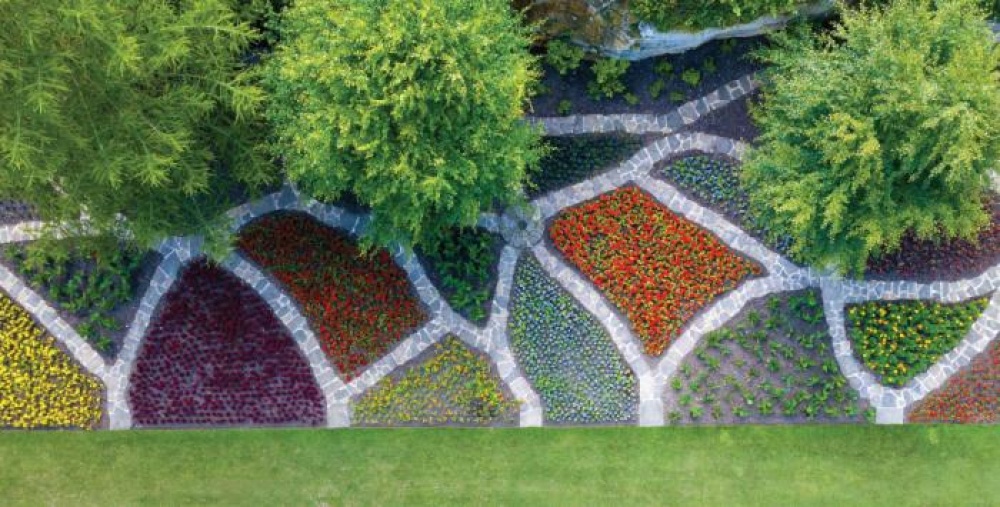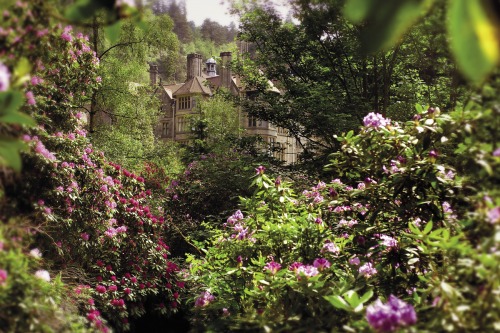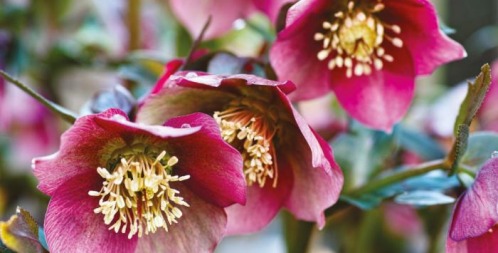All About The Brodsworth Hall Gardens Project in Doncaster

The restoration of the Target Garden is the latest in a series of projects which are bringing Brodsworth Hall Gardens back to their former glory
In 1931, Brodsworth was inherited by Charles Grant-Dalton, who moved in with his wife Sylvia and 12-year-old daughter. Charles died in 1952, but Sylvia remained at the hall until 1988 – by the time she died, she had just one member of staff attending her, the house and gardens.
Sadly yet understandably, the estate sank into disrepair, with Charles and Sylvia’s daughter unwilling to take on the mammoth task of restoring the hall and gardens. The estate was, however, saved in 1990 when it was signed over to English Heritage, who immediately went about major works to make the house safe for the public and to tame the overgrown gardens.
Over the last four years, the garden restorations have been ramped up, due, in part, to the diligence of the current Head Gardener Daniel Hale, who worked for gardening companies and Wentworth Castle, before moving to Brodsworth almost four years ago. During this time, Daniel has delivered one project a year, including restoring the Privy Garden (‘one of the poshest outdoor privies in the country’), the Game Larder and the surrounding landscapes, and now the Target Garden.
He couldn’t have done it alone. ‘I’ve got a fantastic team: there are six full-time gardeners and about 35 garden volunteers, including hands-on gardeners, garden stewards and garden tour guides,’ says Daniel. Brodsworth Hall has the highest number of volunteer hours across English Heritage – and with the scope of the gardens, it’s not difficult to see why. ‘We couldn’t function without them, there’s just too much to do!’
The many different sections of Brodsworth Gardens are designed to work as separate garden rooms. ‘Each area is basically a clever use of topography,’ explains Daniel, ‘so you don’t see the next section of the garden until you’re actually in it.’
This effect has been replicated in the newly-restored Target Garden. Throughout its history, the owners of Brodsworth have always shown an interest in outdoor pursuits, everything from shooting to croquet. Indeed, this passion for entertaining is the reason behind the ‘poshest privy’, as it would have been originally installed so the guests being entertained on the target range and in the fern dell wouldn’t have to traipse back up to the house should nature call.
As with the rest of the gardens (except for the rose garden and rose dell, which were maintained thanks to Sylvia Grant-Dalton’s love of roses), the once-active target range and surrounding gardens had been woefully neglected until last winter, when Daniel and his team of gardeners and volunteers worked tirelessly to bring them back to their former glory.
The neglect of the gardens actually brought with it some unexpected advantages. When the team began the restoration, they unearthed some surprises from the original Georgian house (which was demolished in 1861 to make way for a new, Italianate mansion designed by Philip Wilkinson – Brodsworth as it stands today). ‘When we began the restoration, we found original roof slates from the Georgian house had formed the paving that ran through the beds,’ says Daniel. ‘Some of them even still had the old pegs in there, so you could tell they’d been used on the roof.
‘We slowly built up the archival information, before removing the turf from the stonework to see what the stone’s condition was like,’ he continues. ‘We then had to lift every piece of stone and re-bed them. Looking through the archival photographs, we discovered what bedding plants were used around the 1900 and decided to go with that specific design pattern.’
Sounds simple enough, but Daniel and his team then had to grow every plant from seed in Brodsworth’s own glasshouse, which amounted to a staggering total of 12,000 plants. Among these are salvias, heliotropes, ageratums, marigolds, cannas, coleus and amaranthus, and the beds will undergo spring and summer changeovers.
When undertaking historic restorations, English Heritage always take great care to only use period-specific varieties – plants which would have been available to Victorian and Edwardian gardens in that time period and location.
‘People are often surprised by the amount of detail that goes into it, but that’s what sets English Heritage apart,’ says Daniel. ‘We adhere to the introduction dates of the country, what would have been available and ensure that all the plants are period-correct.’
During the planting, the team stuck to the traditional Edwardian style, which focuses on just one plant per bed. ‘We basically blanketed each bed with one specific plant, no edging or feature plants were involved. When you look at it from the summerhouse it’s almost like a tapestry effect, and then the aerial view is almost like a mosaic window,’ Daniel explains.
At the end of the Target Range is the ‘eye-catcher’, which is a manmade folly designed to draw your eye down the range. This effect is heightened by what are called spine banks, which run down the left-hand side.
‘In the past the gardens would have been quarried and, instead of clearing away all the rubble soil, they created mounds and planted them up with ever-greens, creating the spine banks,’ says Daniel. ‘We’ve removed all the rubble and planted them up so they’re actually part of the garden.’
Daniel admits that growing 12,000 plants from seed was no easy task, and he also felt the pressure of wondering how the restored garden would go down with the public. ‘When you’re restoring a historic garden, there’s always the question of: will people come and see it? But so far, so good!’ laughs Daniel.
In the four years that Daniel has been Head Gardener, Brodsworth has seen visitor numbers increase from 70,000 a year to 100,000, and they’ve won a slew of awards, from Yorkshire in Bloom to inclusion in the Best 100 Gardens. ‘It’s fantastic to have our hard work recognised,’ he says. ‘We’ve really got the momentum going over the last few years and we keep pushing to identify more in the gardens that need restoring.’
For more information on visiting Brodsworth Hall & Gardens, visit www.english-heritage.org.uk








